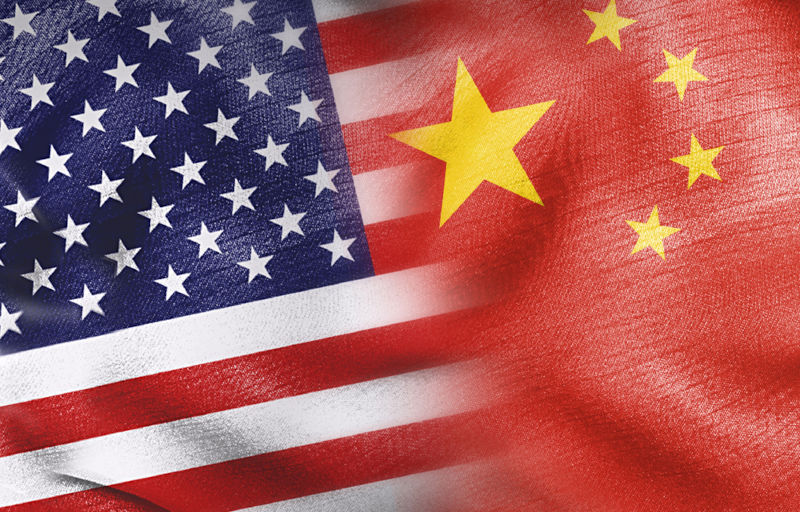ChinaUS rivalry no new Cold War
August 25, 2022
Seventy-five years ago this July, the US diplomat George Kennan published his seminal essay in Foreign Affairs introducing the idea of containment. In The Sources of Soviet Conduct, Kennan advocated for a policy of containment against Soviet expansionism. As some in Washington prepare for a new Cold War with China, the Kennan-era template is being pressed into service again.
A key chapter on The Intellectual Sources of Chinas Conduct published in a 2020 US State Department paper even borrows from Kennans famous title. Others seek a softer variant of the policy that would encircle or contain Chinas influence by excluding it from bespoke security and non-security focused minilateral groupings. Diplomats, like generals, may be wedded to their last war strategy but the challenge posed by China today is vastly different from that which was posed by the Soviet Union.
Kennan reported that Moscow viewed the capitalist system of production as nefarious and exploitative. Coexistence with such a system was impossible because Moscows objective was to overthrow capitalism as a rival centre of ideological authority and geopolitical power. Moscow grasped that patience would be required to prevail against the overwhelming forces of capitalism, so the aim was to gain the faithful and unquestioning acquiescence of revolutionary socialist forces worldwide in the Kremlins cause.
The modus operandi of the reform-era Chinese Communist Party (CCP) bears little resemblance to its Soviet predecessor. The CCPs socialism with Chinese characteristics aims to mobilise capitalisms strength as a means of resource allocation and efficient market exchange, not exploit its supposedly intrinsic class conflict to overthrow it. The Party, self-anointed as an infallible guardian and leader, aims not to employ Chinese socialism as an instrument of geopolitical subversion although its influence operations abroad warrant scrutiny but to squelch organised political activity at home.
Kennans zero-sum reading of Soviet intentions in The Sources of Soviet Conduct was derived from his celebrated Long Telegram, which he had dispatched to his State Department superiors in 1946. In it he ascribed the Kremlins winner-take-all mentality to the instinctive insecurity of the Russian population who by way of living on vast exposed plain in [the] neighbourhood of fierce nomadic people had learned to seek security only in patient but deadly struggle[s] for total destruction of rival power.
Chinese authorities too have faced their own millennia-long encounter with fierce steppe tribes on their periphery. The lessons they drew and their response was altogether different. Total destruction of their fundamentally insatiable rival power was futile. It was cheaper and less destructive to turn their rivals avarice towards profit rather than war, which also preserved their fragmented political structure. Chinas tributary system epitomised this thinking.
A modern version of this system is evident in the Partys economic dealings with various branches of the West. The problem will be exacerbated if Beijing embraces deeper reform of its industrial, investment and capital market regimes while appreciably reopening civil society.
Importantly, Kennans strategy of containment was premised on Washington remaining the dominant global economic power and using this as leverage to exert collective discipline among Western countries in its dealings with Moscow. But China is a protagonist whose economic size and material capabilities at the governments disposal will outstrip that of the United States. This will test a core proposition on which US primacy has rested since the early 20th century that Washington could meet any strategic challenge from a position of national, superior strength.
Several practical deductions follow. A strategy to cope with the challenge posed by China must be built on realism and objectivity, not ideology and values. 21st century China bears closer resemblance to Bismarcks Germany than Stalins USSR.
The currency of competition will primarily be economic and technological. The size of Chinas market will dictate that Washington embrace a light-touch approach when crafting selectively decoupled supply chain strategies.
Deepening a bipolar coalition of allies and partners will be an arduous task. Washington will need to stay more not less internationally engaged compared to Cold War times. Strategic competition against China in the Indo-Pacific will have to be waged primarily for the loyalties of non-allied regional partners.
Military competition within the island chains of the Western-Pacific will remain an inescapable feature of USChina relations and Taiwan will remain a powder keg for the foreseeable future. Regions that Beijing deems as lying beyond the anti-access, area-denial range essential for its prosecution of a first island chain-specific conflict, such as the Indian Ocean and the South Pacific, will remain sideshows.
Containment was built to box-in Moscows subversive tendencies with a limited geographic sphere of influence during which time the seeds of domestic decay would hopefully find their outlet in either the break-up or the gradual mellowing of Soviet power. China is neither about to subvert foreign governments nor break-up or mellow. Strategy must adjust accordingly to this new reality.
Article first published in the East Asia Forum 21 August 2022

